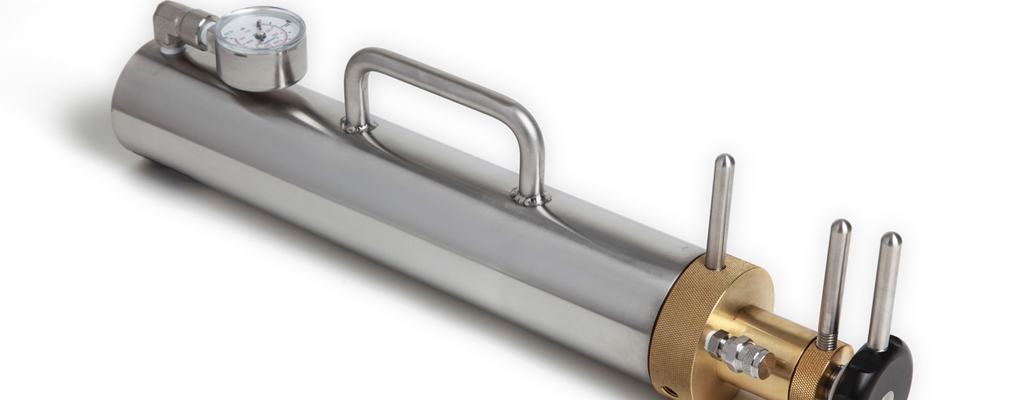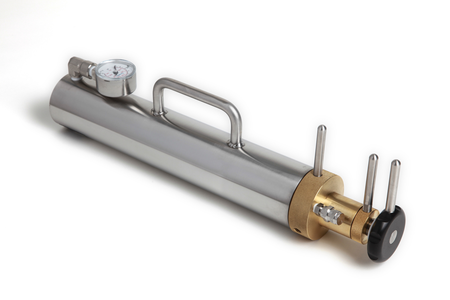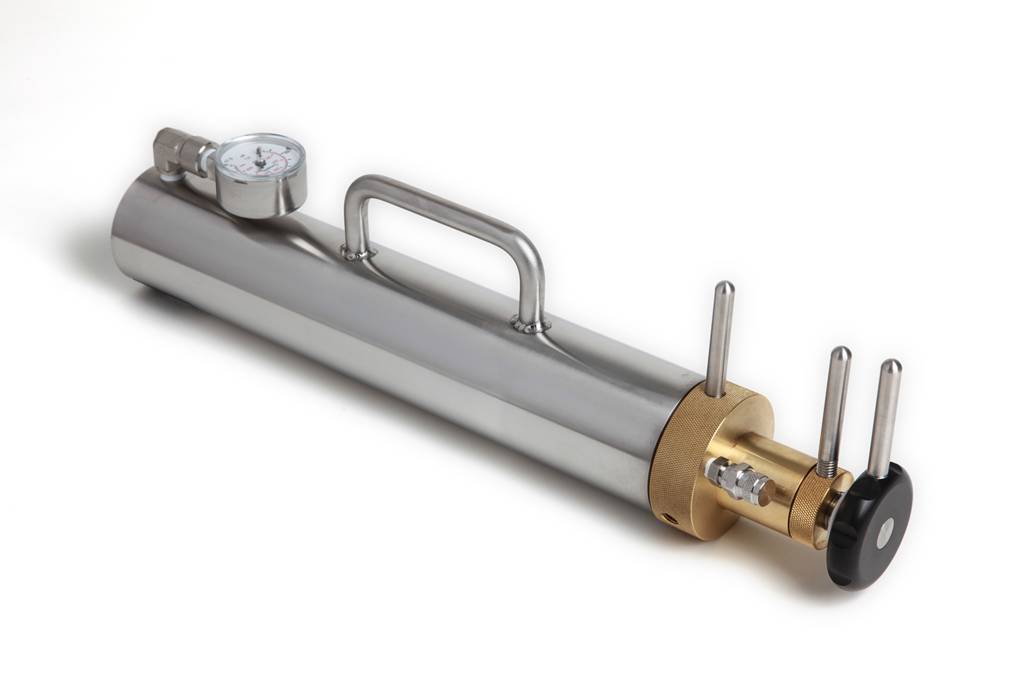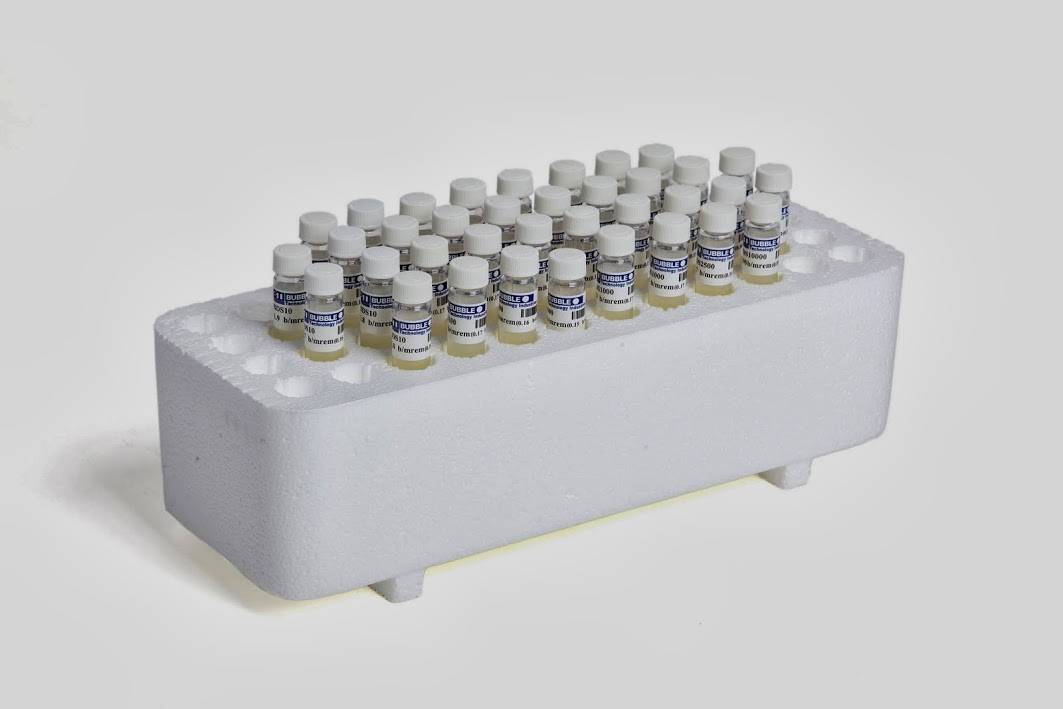The BDS (Bubble Detector Spectrometer) is based on specially formulated bubble detectors that have different neutron energy thresholds. Similar to fast-neutron activation detectors, the measured spectrum from the BDS is derived by “unfolding” the response of the different detectors of the BDS. The BDS provides spectra in six energy bins. It has two very important properties – it is completely insensitive to gamma rays allowing it to be used in areas with intense gamma background and, since it is passive, it can be used in pulsed radiation fields. The BDS is ideal as a low-cost method for assessing the energy of a neutron field, especially where the neutron field is only a very small fraction of the total radiation field. Specialized versions of the BDS have been used to determine the neutron spectrum in space and is often used in connection with pulsed reactor operations and for assessing the neutron field from medical (or research) accelerators.
To recompress (re-zero) the bubbles in the BDS after an exposure, a hydrostatic recompression chamber is available. Eighteen BDS detectors, in a plastic holder, are placed in the RC-18 and the chamber is filled with water. Pressure is applied safely and easily with a screw down piston assembly, with recompression time in the order of 30 minutes.





